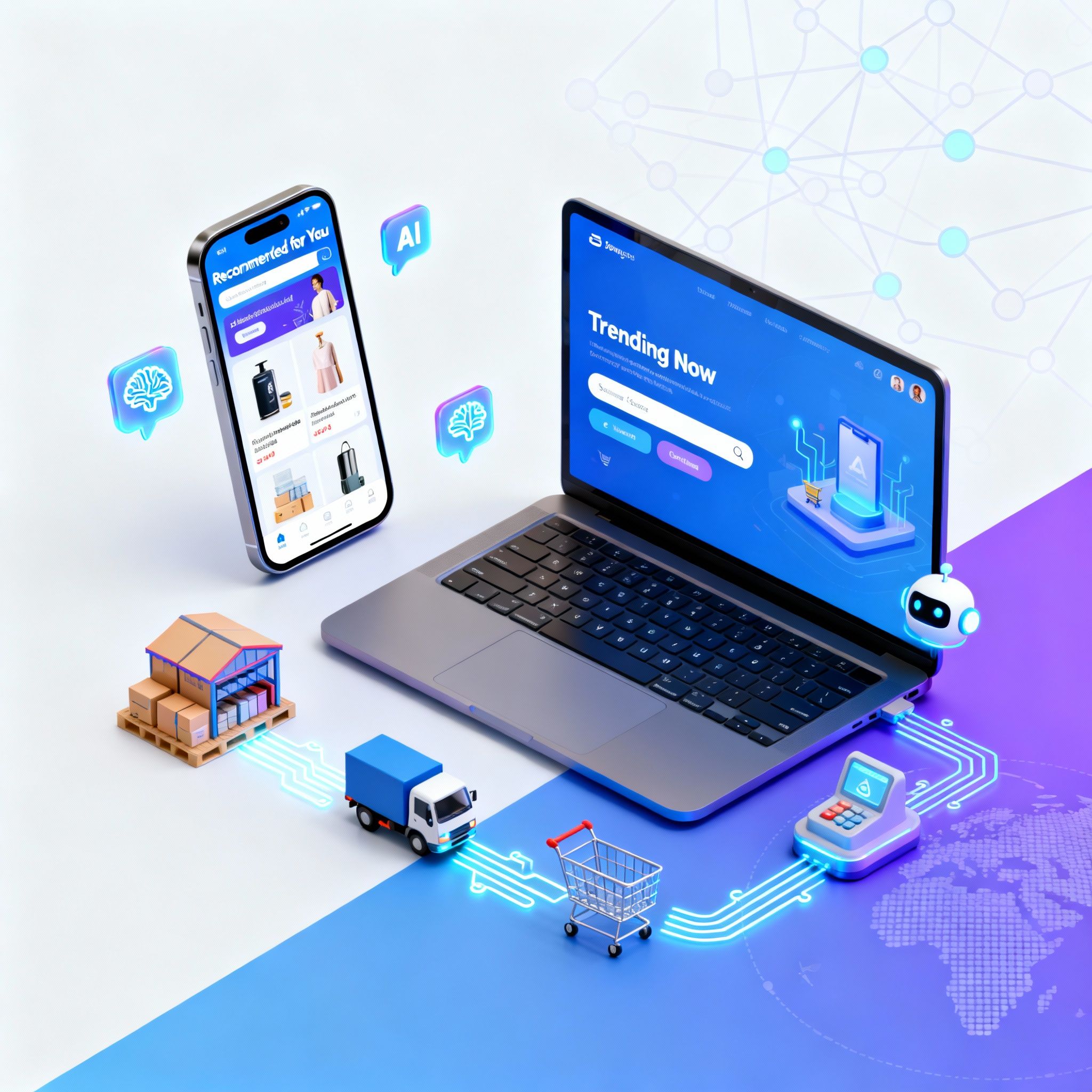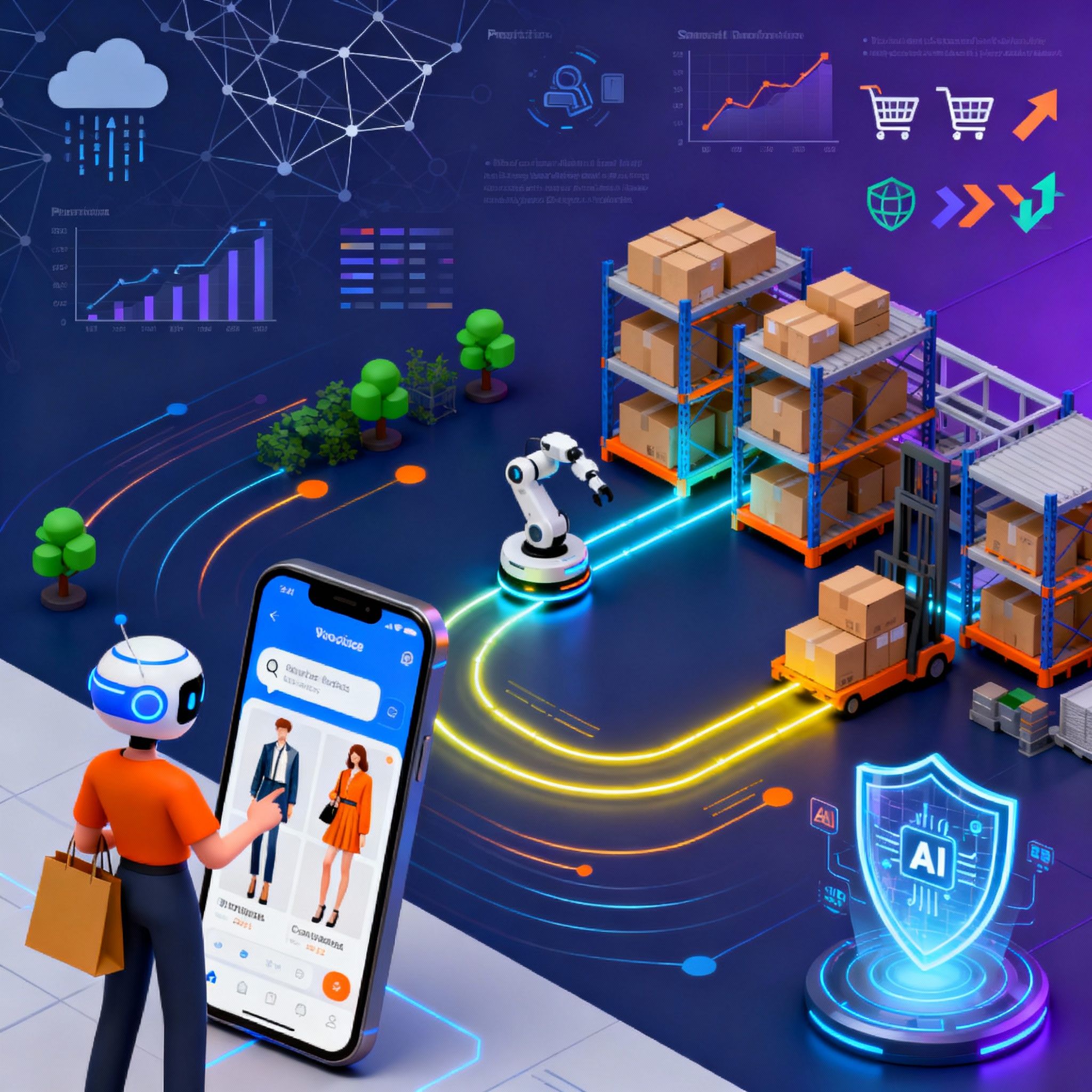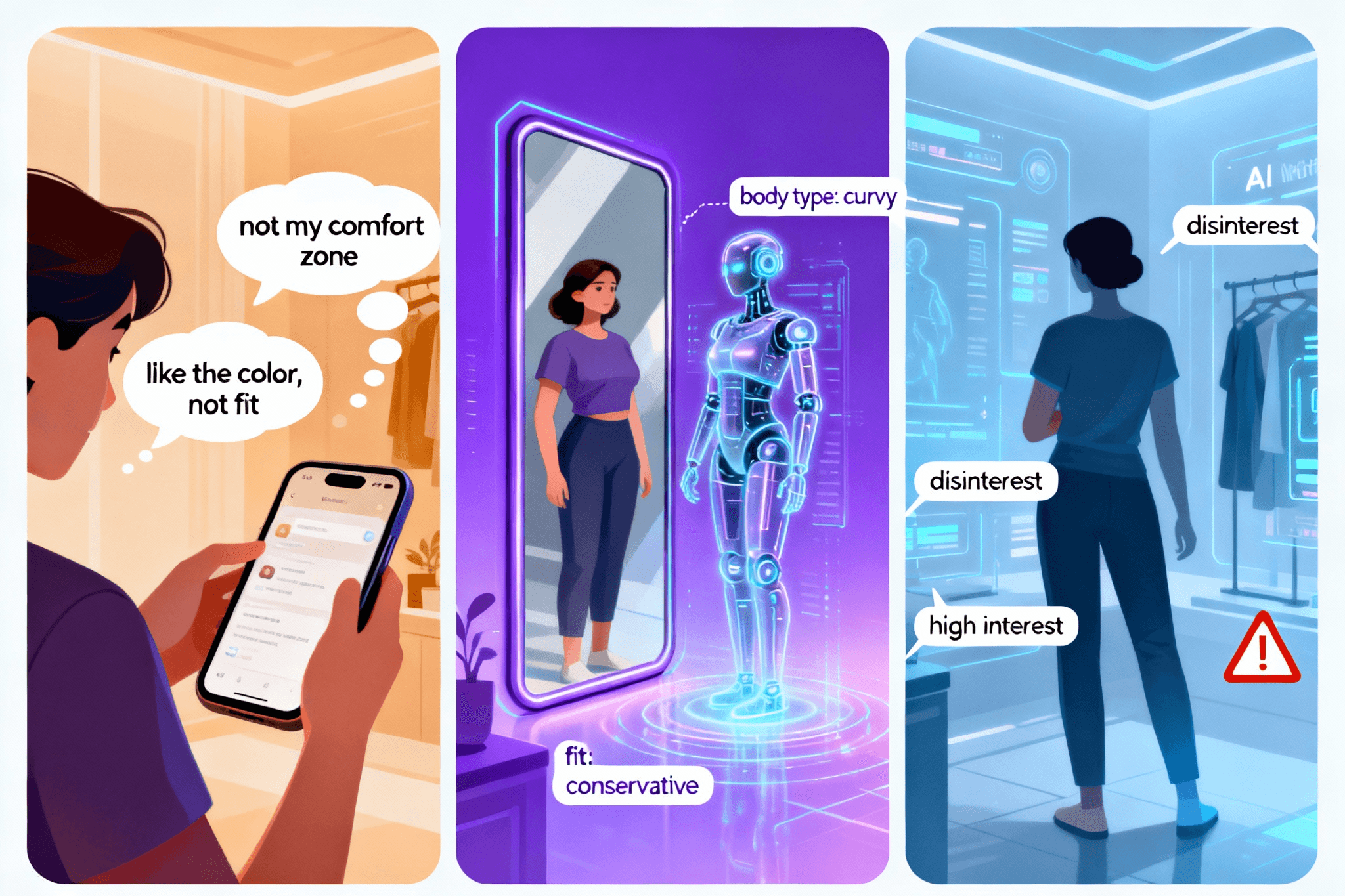AI in Online Shopping: Honors Every Unique Body Type
AI in E-Commerce vs Traditional Commerce: Key Differences


TL;DR
Traditional e-commerce relied on static catalogs, manual operations, and generic customer journeys. Today, AI in ecommerce vs traditional approaches shows a clear winner—AI-driven platforms deliver predictive forecasting, personalized experiences, conversational commerce, and real-time fulfillment. For brands competing in fast-changing ecommerce trends, adopting AI isn’t optional—it’s survival.
AI in Ecommerce: Why the Future Belongs to AI
When e-commerce first emerged, it revolutionized retail. Shoppers could browse online catalogs, add items to carts, and complete transactions without stepping into stores. But as digital adoption matured, cracks began to show: overwhelming product choices, high cart abandonment rates, and logistics inefficiencies.
This is where AI in ecommerce vs traditional methods becomes a defining comparison. Traditional platforms laid the groundwork, but AI-powered systems are shaping the future—driving personalization, automating fulfillment, and aligning with emerging ecommerce trends such as conversational commerce and predictive operations.
The Limits of Traditional E-Commerce

Traditional e-commerce scaled fast, but its limitations are increasingly visible:
- Static product catalogs: Listings rarely adapt in real-time, forcing customers to scroll endlessly.
- One-size-fits-all recommendations: Suggesting “similar products” but failing to tailor based on intent or behavior.
- Manual inventory/logistics: Delayed restocking and inefficient supply chains.
- Lack of conversational engagement: No real-time dialogue—customers interact through clicks, not conversations.
This explains why customer satisfaction plateaus with traditional platforms.
AI in E-Commerce: A Smarter Paradigm

AI commerce flips this model, embedding intelligence across the entire value chain. The difference in AI in ecommerce vs traditional models is not incremental—it’s transformative.
1. Predictive Demand Forecasting
Instead of manual projections, AI predicts demand spikes using search data, historical purchases, and even external factors like weather or events. A McKinsey study says AI-powered demand forecasting can reduce inventory errors by up to 50%.
2. Conversational Commerce
This is one of the fastest-growing ecommerce trends. AI chatbots, voice assistants, and stylist bots engage customers like human associates. For example, fashion apps like Glance provide AI-powered outfit styling, guiding choices conversationally instead of static browsing.
3. Dynamic Logistics and Fulfillment
AI optimizes warehouse layouts, predicts delivery routes, and reduces last-mile delays. Traditional models often struggle with scale, while AI automates supply chain complexities in real time.
4. Fraud Detection & Real-Time Security
Unlike traditional systems relying on static rule sets, AI analyzes behavioral anomalies across millions of transactions, flagging risks instantly.
AI in Ecommerce vs Traditional: A Factor-by-Factor Comparison
Factor | Traditional E-Commerce | AI in E-Commerce |
Customer Experience | Generic browsing | Conversational commerce & personalization |
Product Discovery | Static catalogs | Dynamic, AI-curated feeds |
Operational Efficiency | Manual processes | Automated demand, logistics, pricing |
Cost Management | Reactive & higher waste | Predictive optimization reduces costs |
Scalability | Limited with demand peaks | AI scales dynamically |
Future-Readiness | Reactive upgrades | Continuous learning & adaptability |
This comparison highlights why AI in ecommerce vs traditional operations is no longer a debate—the advantages are measurable and future-proof.
E-Commerce Trends Driving the Shift
Several ecommerce trends make the shift to AI inevitable:
- Conversational Commerce Goes Mainstream
Mobile Trends to Watch in 2024 notes that "GenAI will reinvigorate voice assistants," indicating growing interest in voice-based interactions among younger consumers. Traditional websites cannot meet this demand. - AI-Native Brands vs Legacy Retailers
Startups building AI-first commerce platforms are growing faster than legacy players still reliant on manual catalog structures. - Gen Z’s Expectation of Speed + Personalization
According to a Shopify study, “81% of customers prefer companies that offer personalized experiences,” indicating that consumers increasingly value tailored shopping journeys—something only AI-driven fulfillment enables. Another study, Ecommerce Personalization: Tactics and Examples (2025), says that “89% of business leaders believe personalization will be valuable to their business success in the next three years,” highlighting a broader industry trend toward personalization in ecommerce. - Sustainability and Optimization
AI-driven inventory management reduces waste, aligning with eco-conscious ecommerce trends. Traditional models overproduce and discount excess stock.
Micro-Examples Across Verticals
The strength of AI in ecommerce vs traditional methods is visible across industries:
- Fashion: Traditional online stores overwhelm users with endless product grids. AI platforms like Glance personalize outfit suggestions based on user style, body type, and event context—merging fashion shopping with conversational commerce.
- Grocery: Traditional models rely on weekly restock cycles. AI forecasts demand spikes (e.g., before holidays), reducing waste and stockouts.
- Electronics: Traditional e-stores use seasonal discounts. AI introduces dynamic pricing, adjusting in real-time to demand, competitor pricing, and consumer behavior.
Each case underscores how AI adapts across verticals, unlike traditional static models.
Fraud Prevention and Trust Building: AI at the Frontlines

Trust is the new currency in online retail, where traditional platforms often struggle with reactive fraud handling. AI advances fraud prevention beyond human capacity, analyzing transactional patterns in real time to block suspicious activities while maintaining smooth user experiences.
Machine learning models adapt continuously, spotting new attack methods faster than static rules, enabling safer checkouts and bolstering consumer confidence—crucial for Gen Z wary of data misuse.
Conclusion: The Irreversible Shift
The story of AI in ecommerce vs traditional isn’t just about tech upgrades—it’s about a complete evolution of how businesses interact with customers, manage operations, and plan growth.
Traditional e-commerce will remain the foundation, but it cannot scale to meet ecommerce trends like conversational commerce, hyper-personalization, and sustainability. AI-driven platforms not only outperform but also future-proof operations.
For businesses, the choice isn’t between traditional vs AI—it’s between being disrupted or leading disruption.
FAQs
Q1: What is AI in ecommerce platforms?
AI in ecommerce approaches uses artificial intelligence to deliver personalized, automated shopping experiences, unlike static product listings.
Q2: How does AI in ecommerce improve customer engagement?
AI in ecommerce platforms leverage conversational commerce, chatbots, and recommendation engines to engage users in real-time.
Q3: What are the key differences between AI in ecommerce vs traditional systems?
AI-driven platforms automate inventory, predict trends, and personalize shopping, while traditional systems rely on manual updates and generic suggestions.
Q4: Can AI in ecommerce vs traditional enhance conversion rates?
Yes, AI in ecommerce vs traditional solutions increase conversions through predictive recommendations, personalized offers, and conversational commerce interactions.
Q5: How do ecommerce trends support AI adoption?
Current ecommerce trends, such as hyper-personalization and voice-based commerce, highlight why AI in ecommerce vs traditional methods is gaining momentum.
Q6: Is AI in ecommerce suitable for Gen Z shoppers?
Absolutely. Gen Z prefers AI-driven experiences with fast recommendations, personalized suggestions, and conversational commerce interfaces.
Q7: How does AI in ecommerce affect operational efficiency?
AI in ecommerce systems streamline order processing, inventory updates, and customer interactions, reducing errors and manual intervention.
Q8: Are AI-powered platforms secure compared to traditional ecommerce?
Verified AI platforms maintain strict data privacy and security standards, making AI in ecommerce vs traditional safer for personalized shopping.






